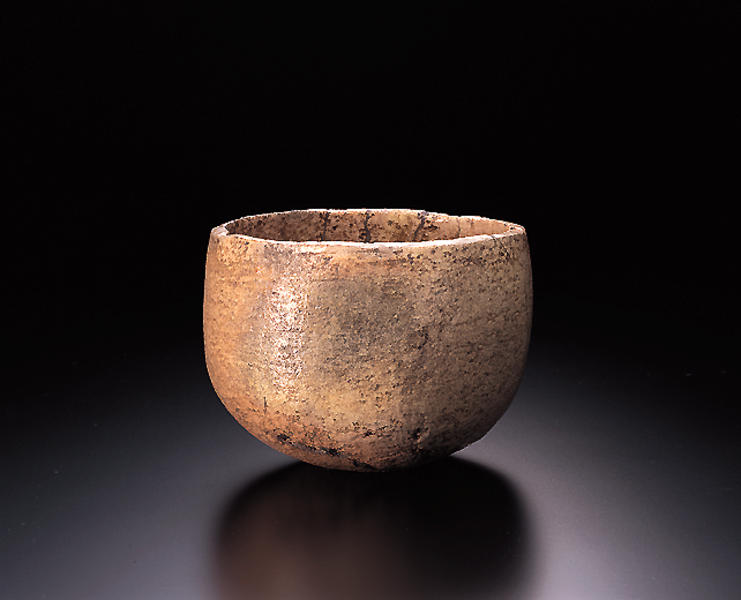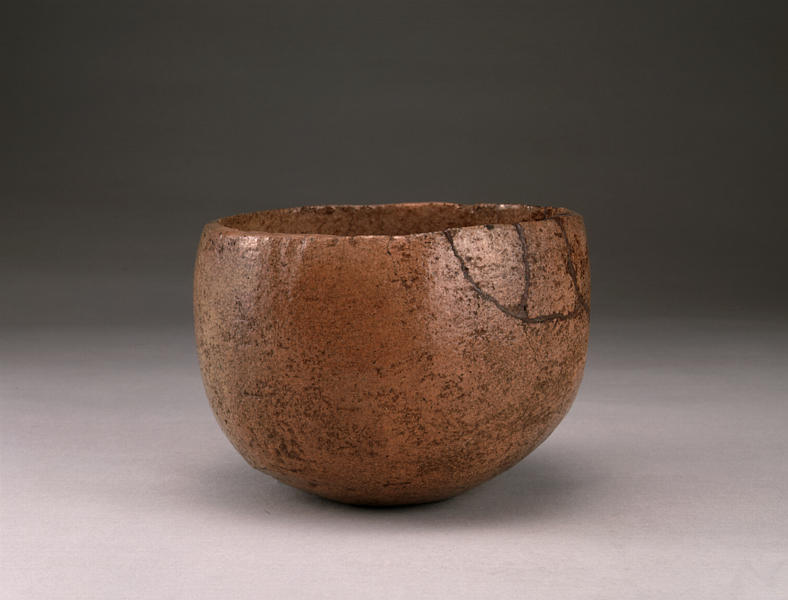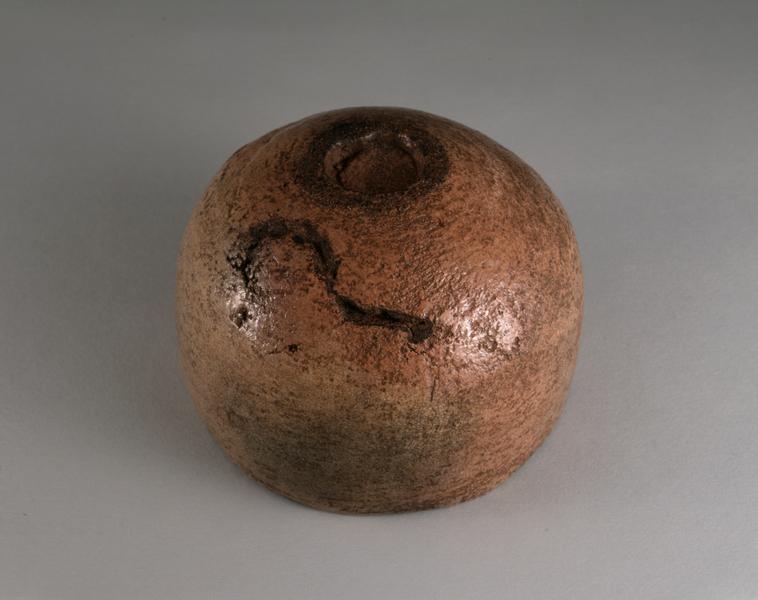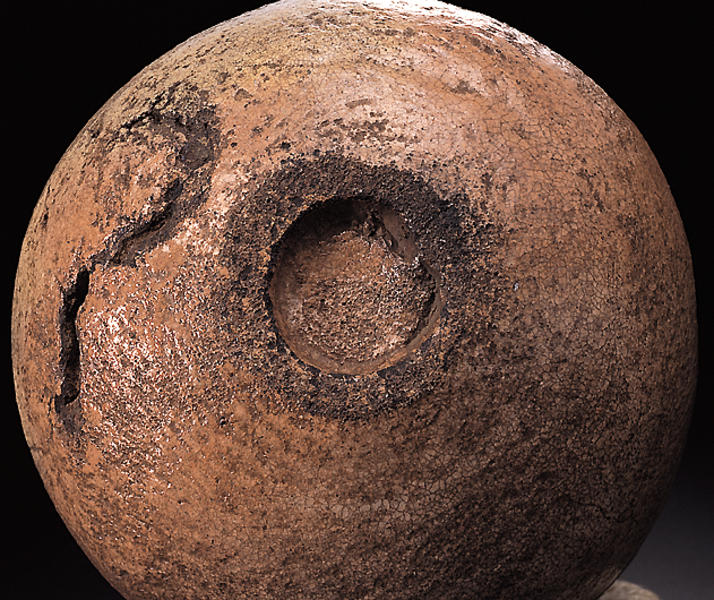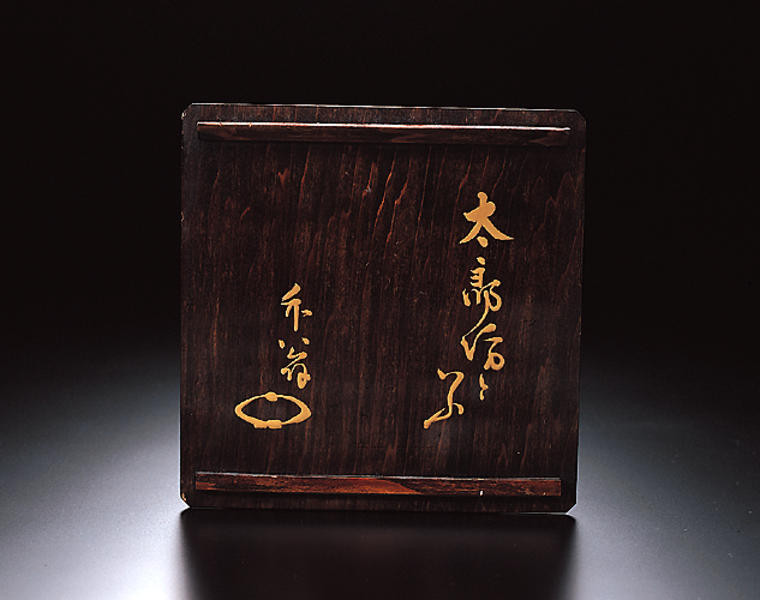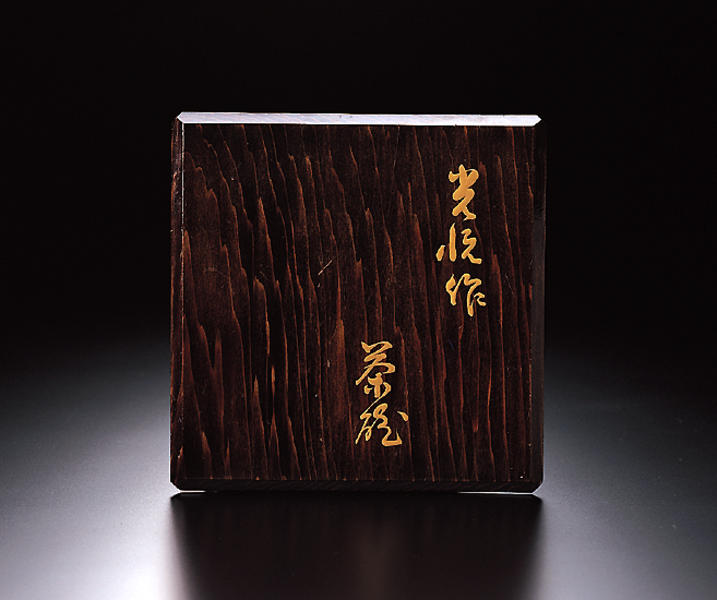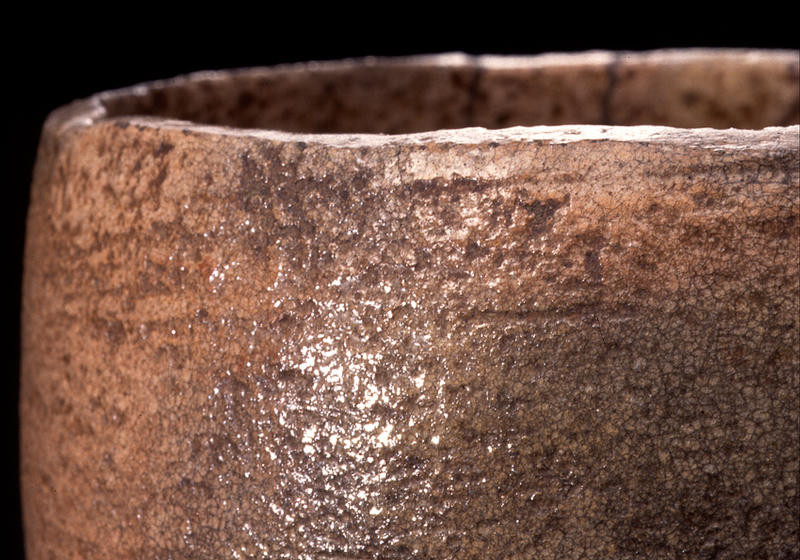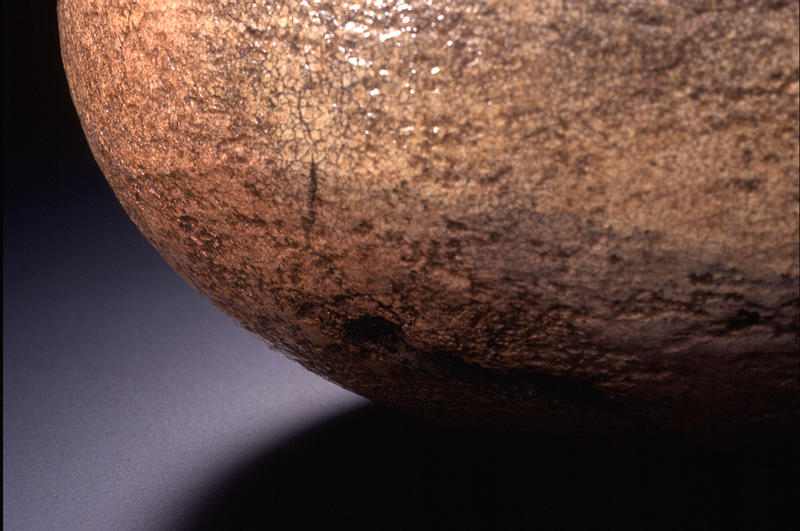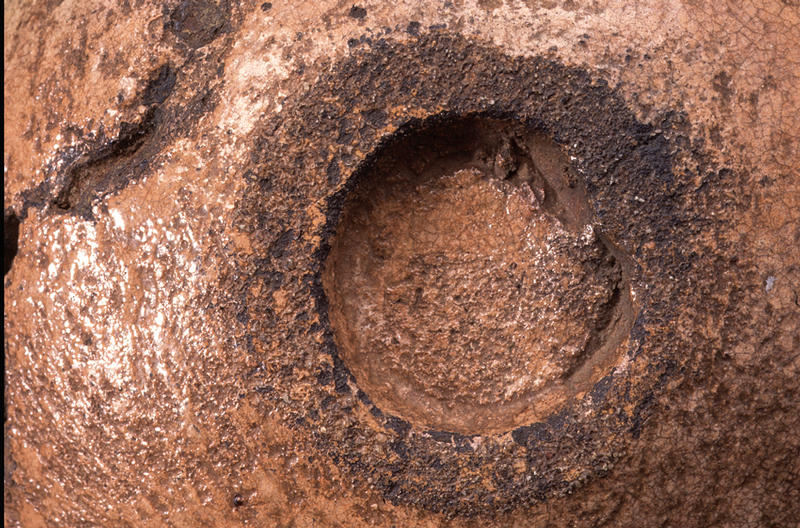Tea Bowl, known as TAROBO by Hon'nami Koetsu
- Takagamine, Kyoto
- Early Edo period
- 17c
- Red Raku ware
- H-9.9 D-13
- Teramura Jotan, Eiraku Wazen, Kishi Mitsukage
Catalogue Entry
by Honnami Koetsu
Edo period, 17th century
Red Raku ware
Height, 9.9cm; mouth diameter, 12.1-12.7cm;
foot diameter, 4.5-4.8cm
Originally a sword appraiser and polisher, Hon-nami Koetsu (1558-1637) was a renowned calligrapher famous as one of the three premier calligraphers of the Kan'ei era, as one of the major tea masters of his day, and also as an excellent potter. Tea bowls comprise the majority of the extant ceramic works by Koetsu. It is said that Koetsu began making ceramics when Tokugawa Ieyasu presented him with land in Takagamine in 1615 (Genna 1). Koetsu made his ceramic works at this Takagamine site and had then fired in the Raku family kiln, they were familiar with Koetsu. This was during the period of the 2nd and 3rd generation heads of the Raku family, Jokei and Donyu respectively, who were friends of Koetsu.
Koetsu's tea bowls can be largely divided into 2 types, those of the taut-hipped, semi-cylindrical form, as seen in the bowl known as Fujisan, and the rounded-hip form as seen in the red Raku tea bowl, Otogoze. While in the past only a few dozen tea bowls were confirmed to be by Koetsu, in recent years his works have become more highly valued and as a result a number of previously unknown bowls have been introduced. This is one such previously unknown bowl. The hip area has been carved into a rounded form, and the foot cut extremely low and inward into the bowl form--characteristics often seen in Koetsu tea bowls. The interior of this bowl is deep; there is a bit of a depression in the bottom of the bowl for the pooling of the tea, and the mouth edge is sharply cut. While red clay appears to have been used for this bowl, it did not fire to as vivid a color as those seen in Donyu's red raku wares, and overall there is a whitish tinged glaze color with some dark gray color. There seems to have been some overworking of the clay when the bowl was shaped and a section of the hip cracked during firing.
The box inscription is by the 7th generation of the Yabunouchi family, Chikuo Jochi. TA
